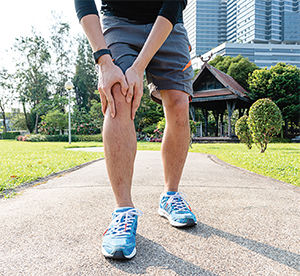
Various-Everythings/shutterstock.com
WASHINGTON, D.C.—Rheumatology researchers look for next-generation treatments, healthy interventions, and genetic and microbial clues to disease pathogenesis and therapy response, according to new studies presented at a Nov. 15, 2016, press conference at the 2016 ACR/ARHP Annual Meeting.
OA & Physical Function
How do you know when a patient with knee osteoarthritis (OA) has the ability to walk at least 6,000 steps a day, an established benchmark for good physical function? That was the focus of a new study presented by its co-author, Daniel K. White, PT, ScD, MSc, assistant professor of physical therapy at the University of Delaware.1
“Physical activity is incredibly important for health, especially for people with knee osteoarthritis,” said Mr. White. “Currently, we don’t know how much physical capacity you need to have to be physically active or to walk 6,000 steps per day.”
Mr. White and his colleagues used data on 1,790 knee OA patients taken from the Osteoarthritis Initiative (OAI) to measure physical activity and function using three tests: how long it takes a patient to stand up from a chair five times, how long it takes them to walk 400 meters and their speed on a 20-meter walk. From these data, they determined function thresholds for patients to be able to walk 6,000 steps daily: taking 12 seconds or less to get up and down from a chair five times, walking 400 meters in 5.5 minutes or less, or walking slower than 1.2 meters per second, Mr. White said.
The good news: More than two-thirds of the patients met or exceeded these thresholds. Patients who don’t meet these thresholds may have levels of physical function too low to be able to walk 6,000 daily steps and need to be referred to rehabilitation, he said. Tests like timing a patient getting up from a chair five times is something that all physicians can do in their offices. “Some physicians [may] be nervous about getting a patient out in the hallway to time them walking, but getting up from a chair is pretty failsafe,” he said.
Microbial Clues
Fecal matter of people with antiphospholipid syndrome (APS), an autoimmune disorder associated with higher thrombosis risk, is enriched with particular, phospholipid-producing bacteria, a new study found.2
Emerging literature suggests that microbiota in patients’ guts may interact with the immune system, and the study suggests that these microbes may be involved in APS pathogenesis, said Martin A. Kriegel, MD, PhD, the principal investigator and assistant professor of immunobiology and medicine at Yale School of Medicine in New Haven, Conn.
